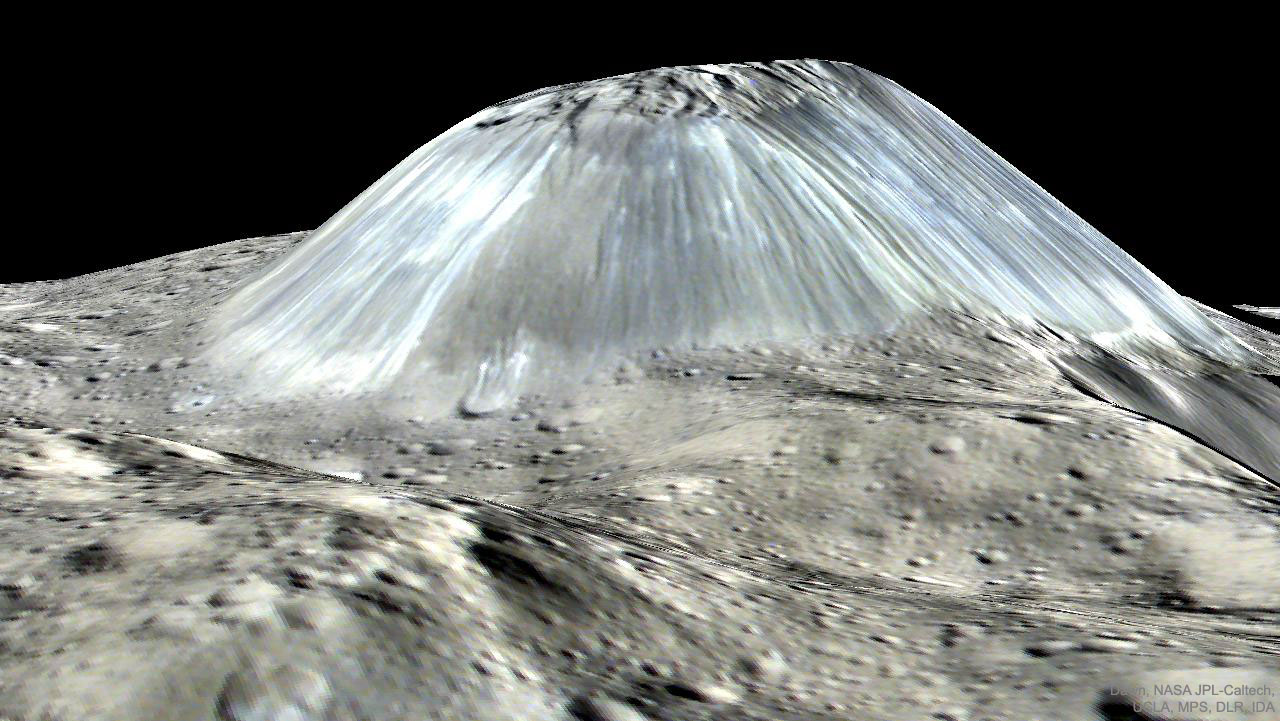2019 June 16
谷神星不寻常的阿胡纳山
影像提供: Dawn Mission, NASA, JPL-Caltech, UCLA, MPS/DLR/IDA
说明: 谷神星上的这座不寻常山峰是怎么形成的?最近有人提出了一个全新的形成理论。在火星和木星间的小行星主带里绕行太阳的谷神星,是现知太阳系最大的小行星,而阿胡纳山则是它上头最高耸的山峰。阿胡纳山是人类前所未见的山岳,举例来说,它的山体并没有点缀着古老的撞击坑,只披覆着垂直的年轻条状结构。根据众多的重力量测提出的新假说指出,有一团泥泡从这颗矮行星的深处浮起,在穿透冰层表面富含高反射率盐的结构弱点后,冻结固化。因此明亮的条状结构之成分,可能和最近刚浮现的谷神星的著名亮斑物质类似。这张高度经过人为加倍的数位主题影像,建构自在2018年结束成功任务的黎明号太空船,于2016年拍摄的表面图。在耗尽让天线保持指向地球所需的燃料后,黎明号仍持续在绕行谷神星。 (Ahuna Mons 阿胡纳山)
APOD周年庆:第一则APOD出现在24年前的今天。
Unusual Mountain Ahuna Mons on Asteroid Ceres
Image Credit: Dawn Mission, NASA, JPL-Caltech, UCLA, MPS/DLR/IDA
Explanation: What created this unusual mountain? There is a new theory. Ahuna Mons is the largest mountain on the largest known asteroid in our Solar System, Ceres, which orbits our Sun in the main asteroid belt between Mars and Jupiter. Ahuna Mons, though, is like nothing that humanity has ever seen before. For one thing, its slopes are garnished not with old craters but young vertical streaks. The new hypothesis, based on numerous gravity measurements, holds that a bubble of mud rose from deep within the dwarf planet and pushed through the icy surface at a weak point rich in reflective salt — and then froze. The bright streaks are thought to be similar to other recently surfaced material such as visible in Ceres’ famous bright spots. The featured double-height digital image was constructed from surface maps taken of Ceres in 2016 by the robotic Dawn mission. Successfully completing its mission in 2018, Dawn continues to orbit Ceres even though it has exhausted the fuel needed to keep its antennas pointed toward Earth.
Anniversary: The first APOD appeared 24 years ago today.







